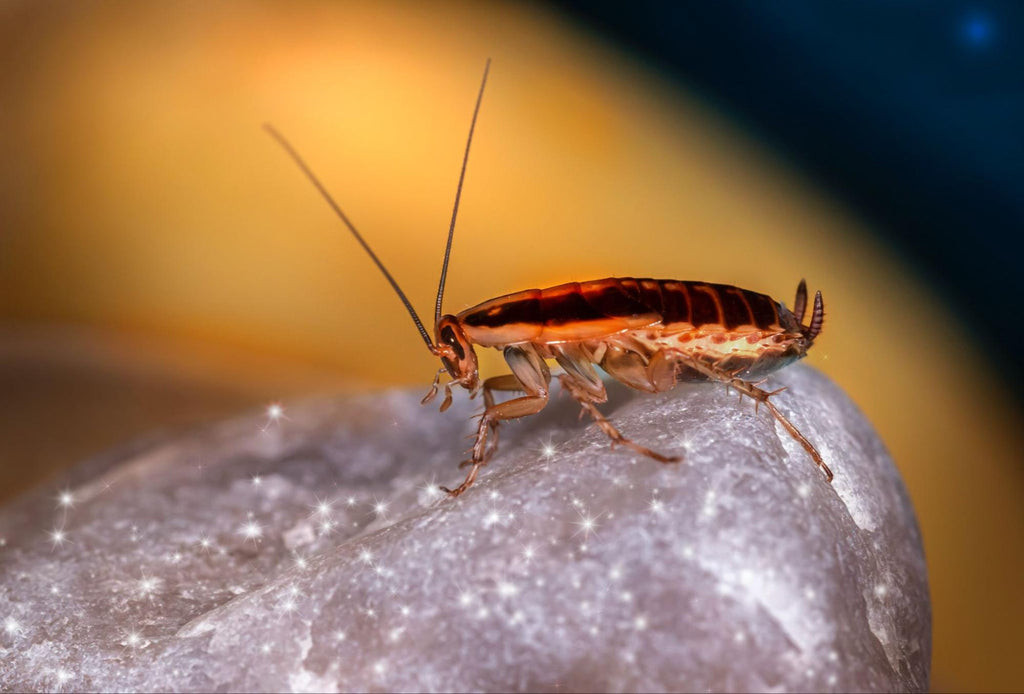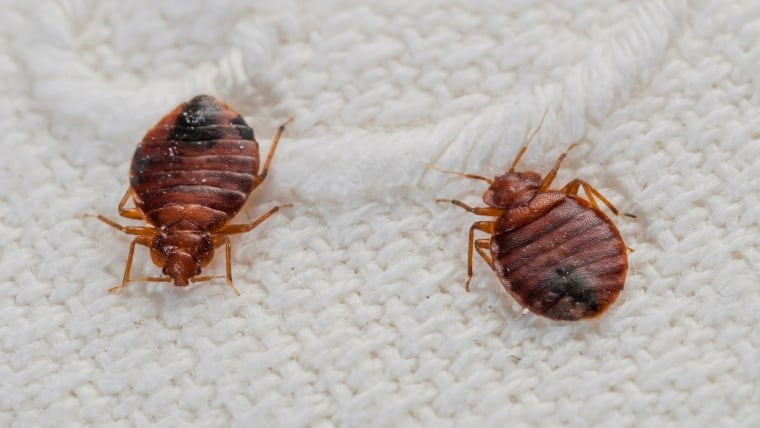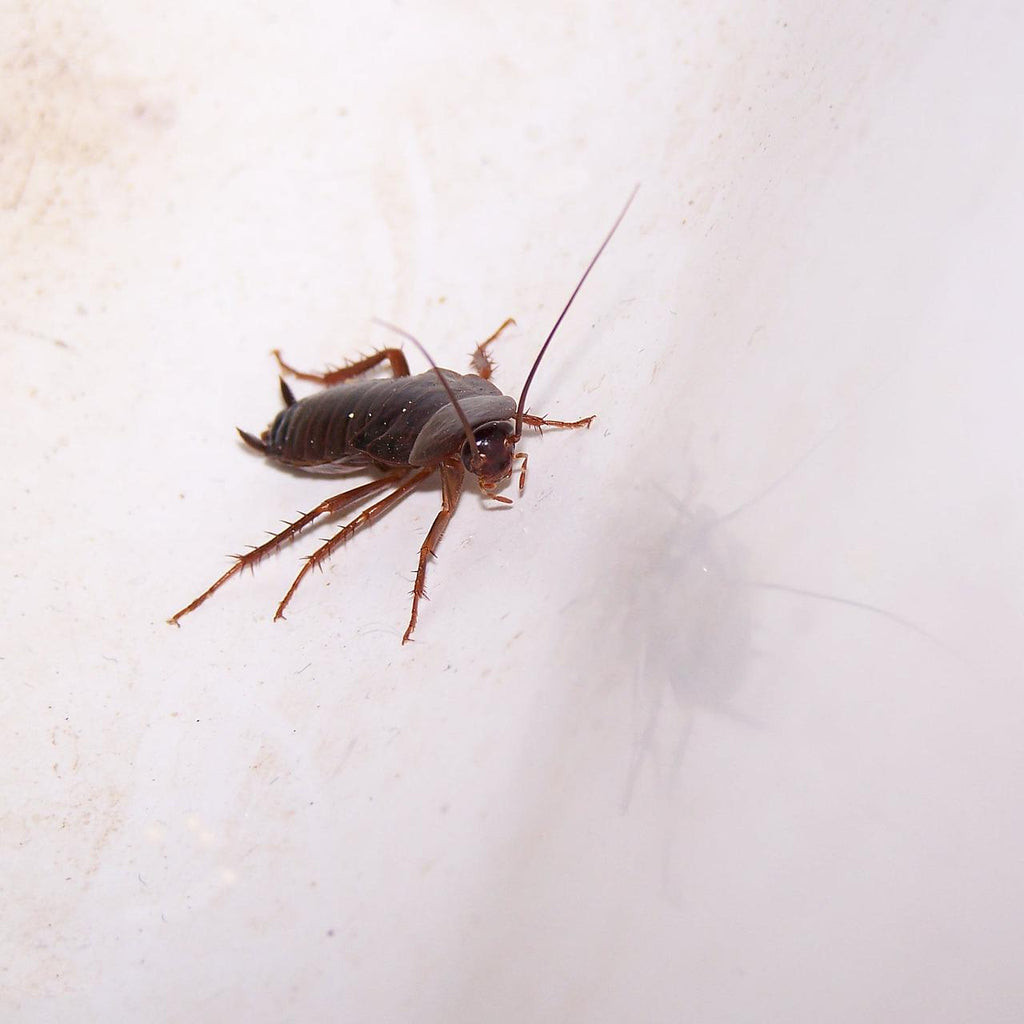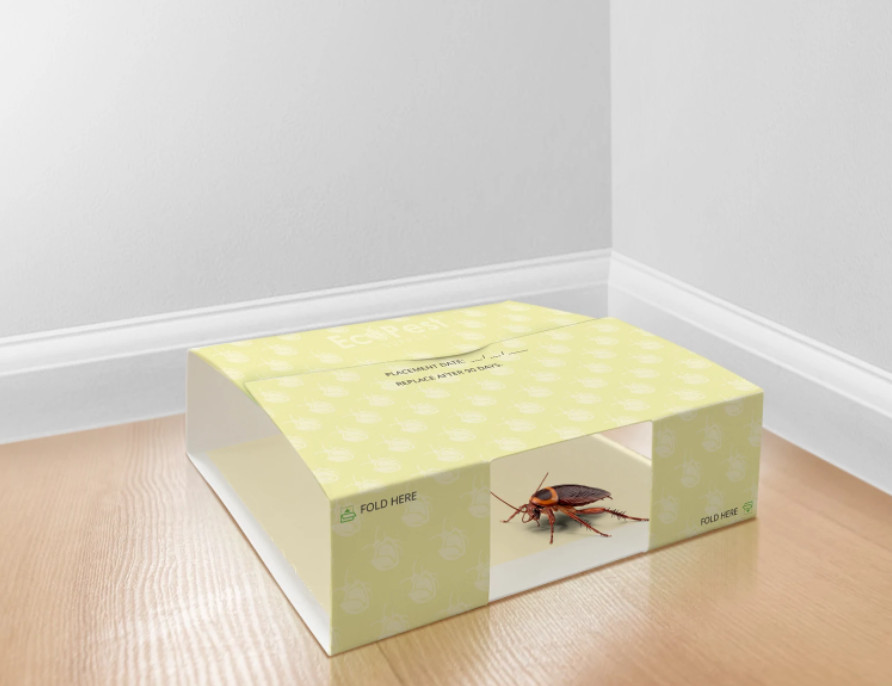Have you ever laid awake, wondering What Bug Makes A Clicking Sound At Night? The experts at streetsounds.net are here to help you identify the urban soundscapes around you, starting with those mysterious nighttime noises. Understanding the source and meaning of these sounds can help you manage potential infestations and appreciate the hidden symphony of city life. With a proactive approach, you can create a pest-free, harmonious soundscape. Explore streetsounds.net for more on environmental acoustics, urban sound design, and nocturnal soundscapes.
1. Identifying the Insect Culprits
To understand what’s clicking and rustling in the night, it’s essential to identify the usual suspects. Roaches, silverfish, and bed bugs are common nocturnal noisemakers. Each has distinct characteristics and behaviors that can help you pinpoint the source of the sound.
1.1. Roaches
Roaches are persistent pests with distinct physical traits and nocturnal behaviors. Identifying these characteristics is crucial for spotting a roach infestation. You may be dealing with roaches if you are hearing clicking sounds.
1.1.1. Physical Characteristics and Behavior of Roaches
Roaches have reddish-brown or dark-brown bodies and are distinguished by their flat, oval-shaped exoskeletons. They have large antennae and six spiny legs, allowing them to move quickly. Roaches are nocturnal, preferring to come out at night to seek food and water. They are incredibly adaptable and can live in various environments, making them a constant annoyance.
While the physical appearance of roaches generally indicates their existence, other clues might assist confirm an infestation. Unusual insect sounds at night are one such sign. As they crawl through cracks and crevices, roaches can make hissing or rustling noises. These noises are caused by their quick movements and communication with other roaches. If you frequently hear similar sounds, you should investigate a suspected roach infestation.
1.1.2. Identify Signs of a Roach Infestation
Roaches excel at hiding and can squeeze into tight spaces. Kitchen cupboards, behind appliances, in-wall voids, under-sinks, and even behind electrical outlets are common hiding places. They have also been observed nesting in crowded places, such as paper or cardboard stacks.
 Roach Infestation Signs
Roach Infestation Signs
Roach infestation signs in a kitchen area.
1.1.3. Health Risks Associated With Roach Infestations
Roach infestations pose serious health concerns to people. With their feces, saliva, and shed skin, these pests can contaminate food and surfaces, causing allergic reactions and asthma flare-ups, especially in sensitive people. Roaches are also known to carry bacteria, pathogens, and parasites that can cause diseases such as salmonella, dysentery, and even typhoid fever. Addressing a roach infestation as soon as possible is critical for preserving a healthy living environment.
1.2. Silverfish
Silverfish, with their distinct look and elusive nature, can go unnoticed until their presence is detected. Let’s look at their distinguishing characteristics, indicators of infestation, favored habitats, and the damage they can inflict.
1.2.1. Physical Characteristics of Silverfish
Silverfish are tiny insects without wings, named for their silvery-gray color and fish-like movements. They have lengthy antennae and three tail-like appendages at the back of their bodies. Their smooth bodies are covered in scales, giving them a shimmering look.
1.2.2. How to Recognize Signs of a Silverfish Infestation
Aside from their unusual look, insect sounds at night can also indicate a silverfish infestation. These sounds can be compared to fast movements or scales rubbing across surfaces. You should look into probable silverfish activity if you frequently hear these sounds.
1.2.3. Silverfish Preferred Habitats and Typical Hiding Spots
Silverfish prefer dark, damp places, hence they choose basements, bathrooms, and kitchens as their preferred habitats. During the day, they can be found hidden in cracks, crevices, and wall gaps, emerging at night to forage for starchy or sugary meals. Because of their affinity for humid environments, they are prone to breeding near plumbing fixtures and other moisture-prone places.
1.2.4. Damage Caused by Silverfish and Their Feeding Habits
Despite their small size, silverfish can cause substantial damage. They eat a variety of items such as paper, cardboard, textiles, and even wallpaper. Their diet contains carbohydrates present in these materials, which causes holes, discoloration, and irregular chew marks. Infestations of silverfish can be especially damaging in libraries, archives, and storage rooms where important records or items are kept.
1.3. Bed Bugs
Bed bugs, the infamous bloodsuckers that cause agony and sleepless nights, have distinct characteristics and behaviors that distinguish them from other pests. Understanding the look, indicators of infestation, hiding areas, feeding routines, and health issues of these challenging insects is critical in controlling them. Additionally, even the most subtile insect sounds at night might be a good way to discover these pests.
 Insect Sounds
Insect Sounds
Insect sounds near bedsheets.
1.3.1. Appearance and Behavior of Bed Bugs
Bed bugs have flat, oval-shaped bodies and are little, flat insects. They are usually reddish-brown in appearance but can get darker after feeding. Bed bugs are nocturnal creatures that feed on human and animal blood. They are drawn to body heat and carbon dioxide, so they frequently infest sleeping areas.
1.3.2. How to Detect Signs of a Bed Bug Infestation
While bed bugs make noise at night, there are more ways to detect the infestation other than sound. Small reddish or rust-colored stains on bedding or furniture, dark spots (bed bug excrement) on sheets or walls, and discarded exoskeletons are other obvious symptoms. Furthermore, bites on your skin that resemble small, itchy welts in a linear or clustered pattern could indicate bed bug feeding.
1.3.3. Common Hiding Areas for Bed Bugs
Bed bugs are good at hiding in close proximity to their hosts. They frequently take shelter in mattress seams, headboards, bed frames, and surrounding furniture. They can, however, infest cracks, crevices, and electrical outlets. Bed bugs are drawn to sleeping people and feed largely at night, usually in the early hours before morning. Because of the anesthetic they inject, their feeding process is painless, allowing them to eat uninterrupted.
1.3.4. Health Implications of Bed Bug Infestations
Although bed bugs can not spread diseases, their bites can cause substantial discomfort, irritation, and allergic responses in certain people. Bed bugs have a negative psychological impact, such as sleep deprivation and anxiety. Prompt intervention is required to prevent the infestation from spreading and to reduce the physical and psychological toll on those affected. Ignoring bed bugs can cause the problem to worsen, making eradication more difficult and expensive.
2. Unraveling the Sounds of Infestation
Each of these pests creates unique sounds, which can be clues to their presence and activities. Understanding these sounds helps you identify the specific intruder and take appropriate action.
2.1. Roaches
Because of their nocturnal nature, roaches engage in a number of activities at night, which frequently result in particular sounds that can be heard in your home. This is a good indicator that you need to get proactive and deal with the roach infestation as soon as possible.
2.1.1. Do Cockroaches Make Noise?
As a defensive tactic, several roach species make a hissing noise when attacked or disturbed. The quick evacuation of air through specific abdominal tissues causes this sound. Additionally, as roaches move across surfaces such as walls, floors, or cupboards, you can hear rustling or scurrying sounds.
2.1.2. Reasons Behind Roach Nocturnal Activities
Roaches are typically nocturnal insects, which means they are most active at night. Their survival instincts drive this behavior. Roaches seek cover in dark and secluded regions throughout the day to evade predators and conserve energy. They emerge as darkness falls in search of food, water, and potential partners. Their nocturnal activities, including the sounds they make, stem from their need for resources and to communicate with other roaches.
 Cockroach Sounds
Cockroach Sounds
Sounds made by a cockroach.
2.1.3. Roach Behavior and Communication
Roaches have complex communication methods that help in their survival and reproduction. Roaches use pheromones to relay information about food supplies, potential predators, and mating availability. Some roach species communicate acoustically, employing noises as a form of social engagement and mate attraction. For example, the hissing sound can be used to deter predators or establish dominance within the roach population.
2.2. Silverfish
Silverfish, with their peculiar motions and body shapes, can make odd sounds that are indicative of their behavior and communication.
2.2.1. Unusual Sounds Produced by Silverfish
Silverfish are known to make sounds by moving quickly and rubbing their scales against objects. These sounds can sound like a light, papery rustling or a gentle swishing noise. These loud sounds are caused by the fast movements of their elongated bodies and friction between their scales and the surrounding environment.
2.2.2. Purpose Behind Silverfish Sounds
Silverfish make sounds for a variety of reasons relating to their activity and survival. For starters, these sounds can be used as a form of communication, assisting silverfish in locating suitable mates or warning others of danger. During mating rituals, silverfish use audio signals to establish their existence and attract compatible partners. Their distinctive sounds aid in their reproductive activities.
Silverfish participate in intricate courtship rituals that include the use of auditory signals. By rubbing their scales against surfaces, male silverfish produce a unique vibration pattern. Receptive females identify these vibrations, allowing them to locate possible mates. Silverfish rely on precise acoustic cues for successful reproduction and population expansion.
 Sounds from silverfish
Sounds from silverfish
A sound of a silverfish.
2.3. Bed Bugs
Bed bugs, while not commonly known, can make sounds that are often disregarded yet are important in their behavior and communication.
2.3.1. Do Bed Bugs Make Noise?
Bed bugs can make sounds like tapping or scraping, which can be heard in certain settings. The strength and frequency of these sounds can vary, mimicking light tapping or slight scraping noise. It is important to note, however, that these sounds are not always immediately discernible, especially in bigger infestations or busy situations.
2.3.2. Significance of These Sounds in Bed Bug Behavior
Bed bugs’ noises influence their behavior and communication patterns. They are thought to be related to movement, feeding, and mating. Bed bugs communicate through a combination of chemical signals and acoustic cues, such as the sounds they make. The tapping or scraping sounds can be used by individual bed bugs to communicate about their feeding patterns or reproductive activity.
2.3.3. Importance of Recognizing Bed Bug Sounds
While bed bug sounds are not as loud as those of other insects, they can serve as vital early indicators of an infestation. Being aware of these sounds, especially in the middle of the night, can assist homeowners in detecting a bed bug infestation before it worsens. Early detection allows for quick action and the installation of effective control measures, preventing the infestation from growing and becoming more difficult to eradicate.
3. Taking Action: Prevention and Control Methods
Once you’ve identified the source of the nighttime sounds, it’s time to take action. Effective prevention and control methods can help you eliminate these pests and enjoy a quieter, healthier home.
3.1. Roaches
Preventing roach infestations requires a proactive approach that emphasizes sanitation and the elimination of potential entry routes for these pests. So, if you are wondering how to stop insect noise at night here are some helpful hints for preventing and controlling roach infestations:
| Prevention Tip | Description |
|---|---|
| Keep Your Home Clean | Keep your home clean and clear of food debris, spills, and crumbs. Sweep, mop, and vacuum the floors on a regular basis, paying special attention to the kitchen and eating rooms. Regularly clean worktops, sinks, and appliances to remove any food residue that may attract roaches. |
| Seal Entry Points | Examine your home for any cracks, gaps, or openings through which roaches can enter. Caulk or weatherstripping can be used to fill gaps around windows, doors, pipes, and utility openings. Repair any damaged screens and make sure there is adequate airflow. |
| Remove Clutter | Roaches thrive in cluttered environments. To remove potential roach hiding places, declutter your living spaces, storage areas, and basements. Remove any paper stacks, cardboard boxes, or anything that could provide refuge. |
| Store Food Properly | Food should be stored in sealed containers to avoid attracting roaches. Avoid keeping food out overnight, and clean up any spills or crumbs as soon as possible. Pet food should also be carefully stored and not left out for extended periods of time. |
| Use Roach Sticky Traps | Place roach sticky traps in areas where roaches are prone to travel, such as along baseboards, behind appliances, and in cupboards. These traps work well for capturing and monitoring roach activity. |
| Professional Pest Control Services | For severe or persistent infestations, it is crucial to seek professional pest control services. Professional pest control technicians have the knowledge and specialized treatments needed to effectively eliminate roaches and prevent future infestations. They can examine the level of the infestation and offer specific remedies to the problem. |
When it comes to roach infestations, remember that prevention is vital. You can reduce the likelihood of roaches invading your house by maintaining proper hygiene, sealing entry points, and using effective control methods.
 Professional Pest Control
Professional Pest Control
A professional doing pest control.
3.2. Silverfish
Silverfish infestations can be reduced by addressing their preferred habitat conditions and eliminating potential food sources. Here are some silverfish-repelling measures to consider:
| Prevention Tip | Description |
|---|---|
| Reduce Moisture | Silverfish thrive in damp environments. Reduce moisture levels in your home by employing dehumidifiers in humid places like basements and bathrooms. To avoid extra moisture buildup, repair any leaks or plumbing faults as soon as possible. |
| Remove Food Sources | Silverfish feed on a variety of starchy and sweet substances. Foods such as cereals, grains, and pet food should be stored in sealed containers to make them less accessible to silverfish. Furthermore, tidy up crumbs and spills as soon as possible to avoid potential food sources. |
| Silverfish Sticky Traps | These sticky traps are designed exclusively for silverfish and can be put in areas where silverfish activity is suspected. The sticky surface of the traps will attract bugs and assist in monitoring their presence. |
| Silverfish Bait Traps | Using silverfish bait traps is another alternative. The lure in these traps attracts silverfish, and once inside, they are unable to escape. Bait traps can be set up in areas where silverfish are frequent, such as basements, closets, or bookcases. |
| Regular Inspections | Inspect your home on a regular basis for evidence of silverfish activity, such as shed skins or droppings. Pay special attention to dark and hidden spots where silverfish may hide, such as cracks, crevices, and under bookcases. |
Remember that prevention is the key to reducing silverfish infestations. You can create an environment that is less appealing to silverfish and prevent their population from growing by lowering moisture, removing food sources, using commercial items such as sticky pest control traps and bait traps, and doing regular inspections.
 Pest Control Traps
Pest Control Traps
Sticky pest control trap.
3.3. Bed Bugs
A proactive strategy and a mix of preventive measures are required to prevent bed bug infestations. Here are some proven methods for preventing bed bug infestations:
| Prevention Tip | Description |
|---|---|
| Regular Mattress Inspections | Inspect your mattress and linens on a regular basis for signs of bed bugs. Look for small dark spots (fecal stains), shed skins or tiny bloodstains. Pay close attention to the seams, tufts, and edges of the mattress, since these are frequent places for bed bugs to hide. |
| Cleanliness | Keep your living space clean and clutter-free. Vacuum your home on a regular basis, focusing on cracks, crevices, and spots where bed bugs can hide. To kill any potential bed bugs or eggs, wash and dry your bedding, including sheets, pillowcases, and blankets, on high heat. |
| Bed Bug Glue Traps | Consider using bed bug glue traps in areas where bed bugs are likely to travel, such as around the legs of your bed and near the headboard. These traps can assist catch any bed bugs that are present while also serving as a monitoring tool. |
| Reduce the use of secondhand items | Be cautious when purchasing used furniture, mattresses, or clothing. Before bringing these goods into your house, thoroughly inspect them since they can be possible sources of bed bug infestations. |
| Professional assistance | In extreme cases or if your preventive efforts are ineffective, professional assistance is required for efficient bed bug control. Bed bugs can be effectively eliminated by pest control professionals who have the knowledge, experience, and specialized remedies. |
Remember that early detection and prevention are critical in dealing with bed bug infestations. Early detection can be helped by regular mattress inspections, hygiene, and the use of bed bug glue traps or interceptors. However, if the infestation persists or worsens, it is strongly advised that you seek expert help to ensure efficient control and ultimate eradication of bed bugs from your house.
4. Streetsounds.net: Your Urban Sound Resource
At streetsounds.net, we understand the importance of a harmonious environment. While addressing pest-related noises is crucial, we also encourage you to explore the positive aspects of urban sounds. Our platform offers a rich library of street sound recordings, perfect for musicians, filmmakers, and anyone seeking creative inspiration.
4.1. Creative Uses of Urban Sounds
Urban sounds can be transformative in various artistic endeavors. Imagine incorporating the rhythmic tapping of street performers, the distant hum of city traffic, or the unique clicking sounds of nocturnal insects into your music or sound design projects. These elements can add authenticity and depth, creating immersive and captivating experiences.
4.2. Soundscapes and Well-being
Understanding and appreciating the sounds around us can also improve our well-being. By identifying and mitigating negative sounds, like those from pest infestations, and focusing on positive sounds, such as the lively chatter of a local market or the soothing rhythm of rain, we can create a more pleasant and engaging auditory environment.
4.3. Join the Streetsounds.net Community
We invite you to explore our extensive sound library, read insightful articles, and connect with fellow sound enthusiasts. Share your experiences, ask questions, and discover new ways to appreciate the urban symphony around you.
Address: 726 Broadway, New York, NY 10003, United States
Phone: +1 (212) 998-8550
Website: streetsounds.net
5. FAQ: Decoding Nighttime Bug Sounds
| Question | Answer |
|---|---|
| What is that clicking sound I hear at night? | The clicking sound you hear at night could be due to various insects like roaches, silverfish, or bed bugs. Identifying the exact source requires careful observation and potentially professional inspection. |
| How can I tell if the sound is from roaches? | Roaches often make hissing or rustling sounds as they move. These sounds are more pronounced when they are disturbed or communicating with each other. |
| Do silverfish make any sounds? | Yes, silverfish can make light, papery rustling sounds or gentle swishing noises as they move quickly and rub their scales against surfaces. |
| Can bed bugs make noise? | Bed bugs can produce tapping or scraping sounds, though these are often faint and not easily discernible. These sounds may be related to their movement, feeding, or mating activities. |
| What should I do if I suspect a pest infestation? | If you suspect a pest infestation, start by identifying the type of pest based on the sounds and any other signs like droppings or bites. Then, implement preventive measures and consider professional pest control services for severe or persistent infestations. |
| How can I prevent roach infestations? | Prevent roach infestations by keeping your home clean, sealing entry points, removing clutter, storing food properly, and using roach sticky traps. |
| What are some tips for preventing silverfish? | Prevent silverfish by reducing moisture levels in your home, removing their food sources, using silverfish sticky traps and bait traps, and conducting regular inspections. |
| How can I prevent bed bug infestations? | Prevent bed bug infestations by regularly inspecting your mattress, maintaining cleanliness, using bed bug glue traps, being cautious with secondhand items, and seeking professional assistance if needed. |
| Are pest infestations dangerous? | Pest infestations can pose health risks, such as allergic reactions, asthma flare-ups, and the spread of diseases. They can also cause property damage, making it important to address infestations promptly. |
| Where can I find more information about urban sounds and pests? | For more information about urban sounds, creative uses of soundscapes, and pest-related noises, visit streetsounds.net. Our platform offers a rich library of street sound recordings, insightful articles, and a community of sound enthusiasts. You can also contact us directly for expert advice and practical solutions. |
6. Conclusion
Strange insect sounds at night should never be disregarded because they can indicate an infestation in your home. We’ve focused on three common pests: roaches, silverfish, and bed bugs, and talked about their unique characteristics, behaviors, and threats.
Being vigilant in identifying signs of infestations related to these pests is crucial for maintaining a safe and pest-free home environment. The hissing of roaches, the rustling of silverfish, or the tapping of bed bugs are all warning signs that should not be ignored. Early discovery and prompt response are critical in avoiding infestations from spreading and generating additional issues.
We’ve highlighted different insect prevention and control strategies, ranging from keeping your home clean and blocking entry points to employing particular devices like sticky traps and bait traps. However, keep in mind that severe or chronic infestations might require professional assistance. EcoPest can provide the expertise and specific treatments required for efficient pest control in this situation.
You can protect your house and family by acting quickly, using prevention strategies, and obtaining professional help when necessary. Don’t overlook unusual insect sounds at night. Maintain vigilance, educate yourself on the indicators of infestations, and take proactive steps to treat any problems. You can have peace of mind and a pest-free living environment by taking a proactive approach to pest control.
Remember, streetsounds.net is here to help you with all of your pest management requirements and urban sound exploration. Contact us for expert advice and practical solutions. Protect your home, and your loved ones, and say goodbye to pesky pests while discovering the creative potential of your surroundings.
